Best Location For A Wood Stove 2024
- October 12, 2023
- 1 comment
In the cold embrace of winter, the allure of a wood stove’s warmth becomes irresistibly inviting. But finding that ideal spot in your home for this captivating source of heat is about more than just cozy vibes. The key is striking the right balance between its operational efficiency and its ability to enhance your home’s aesthetic charm.
Navigating through safety guidelines while also wanting to ensure it complements your living space can be a tad challenging. This guide will offer you a clear roadmap, ensuring that your wood stove not only serves as a powerful heat source but also stands out as a captivating focal point in your home’s decor.
1. Room Selection
Large Rooms
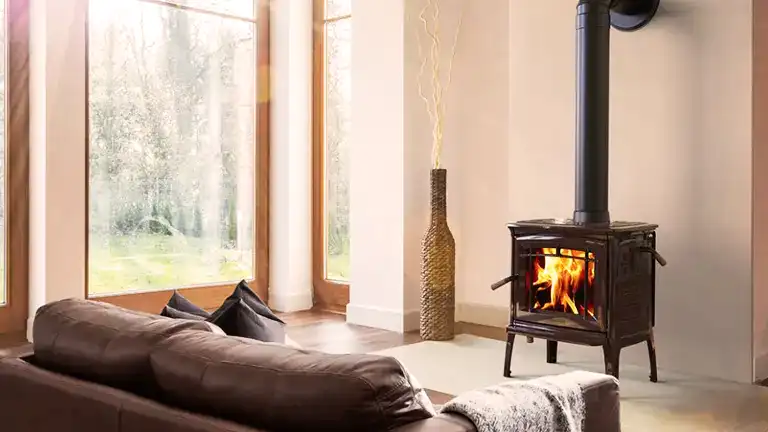
Before diving into specifics, it’s essential to first ponder two interrelated aspects: where you’d ideally like your stove to be situated within your home, and whether that location also aligns with an optimal position for your chimney. These two considerations go hand-in-hand, as the stove’s effectiveness is closely tied to the chimney’s functionality.
One of the primary considerations when placing a wood stove is the size of the room. Larger rooms naturally offer a more expansive space for the heat from the stove to circulate. By positioning your wood stove in such a spacious setting, you not only ensure effective dispersion of warmth, resulting in a uniformly comfortable temperature, but you also cater to the stove’s need for airflow. A roomier environment typically facilitates better airflow, pivotal for maintaining the stove’s optimal combustion. Thus, while the allure of a specific spot might be strong, it’s vital to ensure that both the stove and chimney can function at their best in that chosen location.
Accessibility
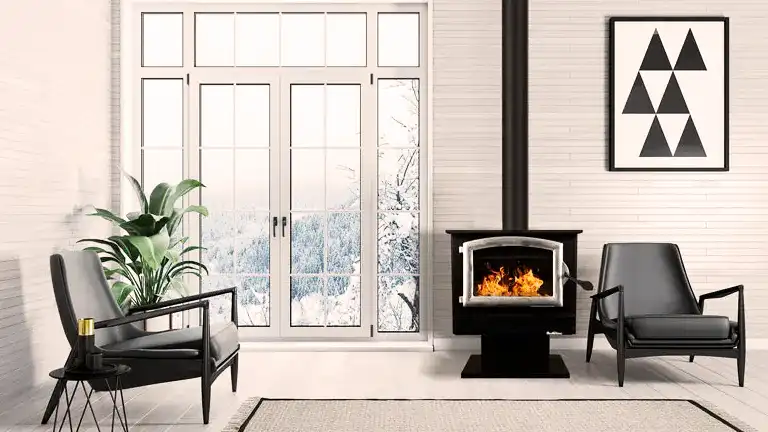
Practicality is crucial when considering where to place your wood stove. One aspect of this is how easy it is to bring firewood to the stove. Ideally, the stove should be situated near a door or entrance. This not only makes the task of replenishing your wood supply more straightforward but also minimizes the likelihood of dropping wood debris, bark, or dirt as you move through your home. By doing so, you’ll keep your living space tidier and reduce the effort involved in cleaning.
Traffic Flow

Safety should always be paramount when working with heat sources like wood stoves. It’s essential to position your stove in a location where it’s unlikely to be bumped into or become an obstacle. By ensuring that your wood stove is placed away from the primary walkways and traffic zones in your home, you minimize the risk of accidental burns or fires. Moreover, a strategically placed stove can prevent children and pets from getting too close when it’s in operation, further enhancing safety measures in your living space.
2. Floor Protection
When we talk about the installation of a wood stove, one crucial aspect that often gets overshadowed is the protection of the floor beneath it. Wood stoves, with their high temperatures, necessitate a protective layer that can withstand and counteract their intense heat.
Non-Combustible Floor Pad
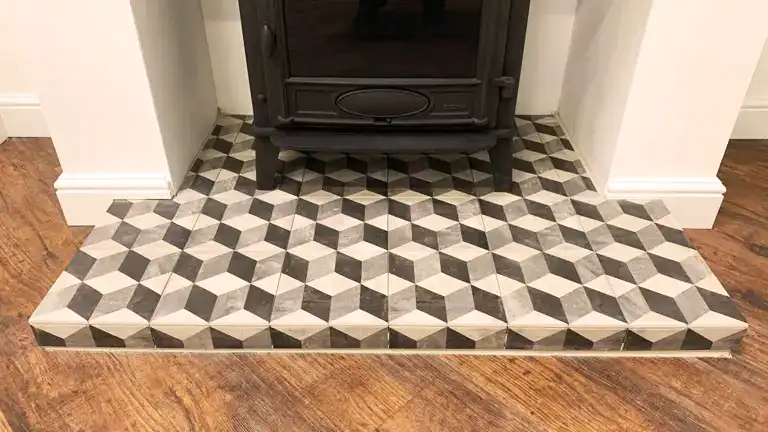
A wood stove’s radiant heat can pose a potential threat to your flooring, especially if it’s made of combustible material. Hence, installing a non-combustible floor pad becomes a requisite. These pads are specially designed to shield your floor from both the heat and any embers or ash that might escape from the stove.
Dimensions Matter
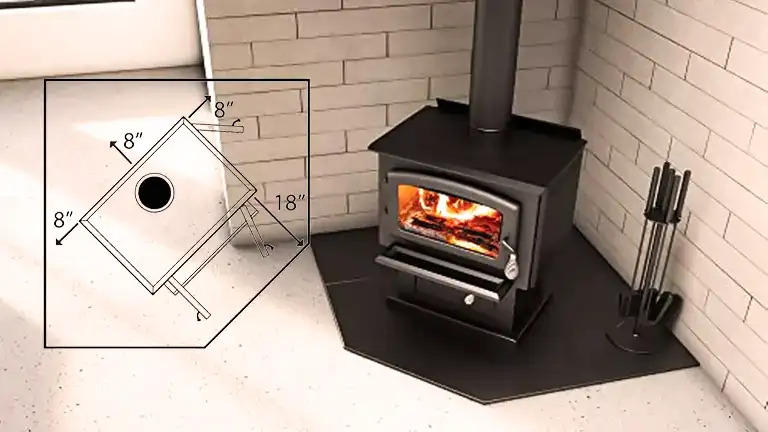
The efficacy of a floor pad is not just in its material but also in its size. The pad shouldn’t be just as big as the stove; it should extend beyond its dimensions to offer effective protection. Ideally, the pad should jut out at least 8 inches past the sides and rear of the stove. When it comes to the front, where the stove’s door is, an extension of 18 inches is recommended. This ensures that even if embers or ash were to fall out when the door is opened, they’d land on the pad and not your actual flooring, thereby preventing potential fire hazards.
3. Chimney Location
The chimney, while sometimes overlooked, plays a pivotal role in ensuring your wood stove functions optimally. Its location affects everything from the stove’s efficiency to the safety of your home.
Through the House
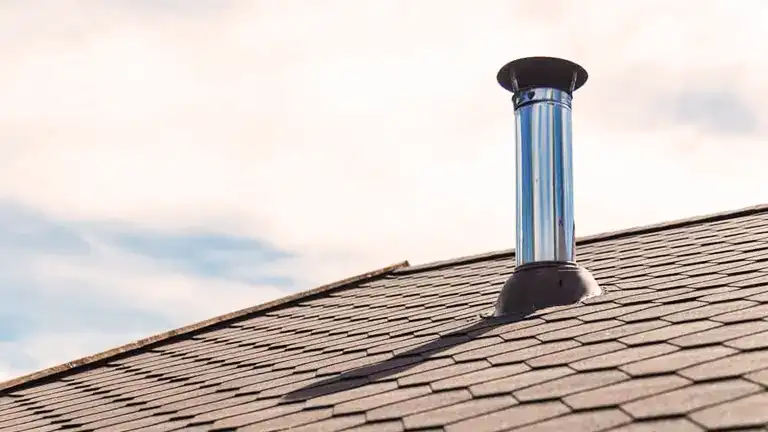
Ideally, chimneys should be located within the house’s interior, extending up and out close to the ridge. An internal chimney path benefits from the home’s insulation, promoting a warmer flue. This warmth assists in creating a better draft, which in turn ensures efficient smoke exit and reduces the buildup of creosote a leading cause of chimney fires.
Second Floor Considerations
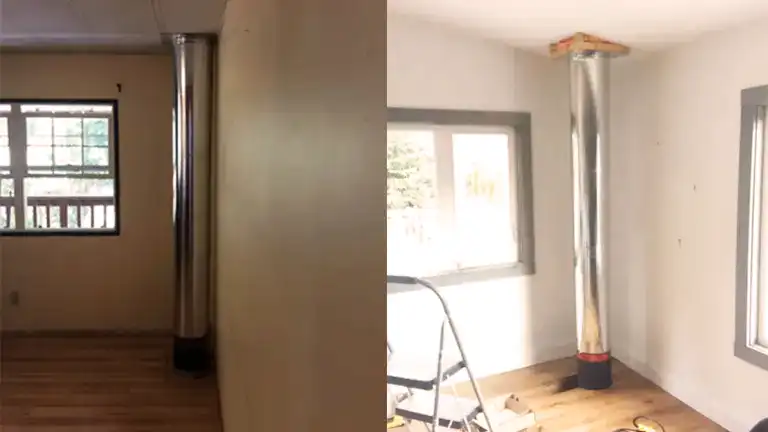
If your chimney needs to pass through a second story, careful planning is required to address both functional and safety concerns. Positioning the chimney in a corner or a dedicated closet can help in minimizing its intrusion into living spaces. However, if it does need to run through an occupied room, it’s imperative that it’s properly framed and enclosed. This not only protects residents from accidental burns but also enhances the room’s aesthetic by concealing the chimney pipe.
Outside Chimneys
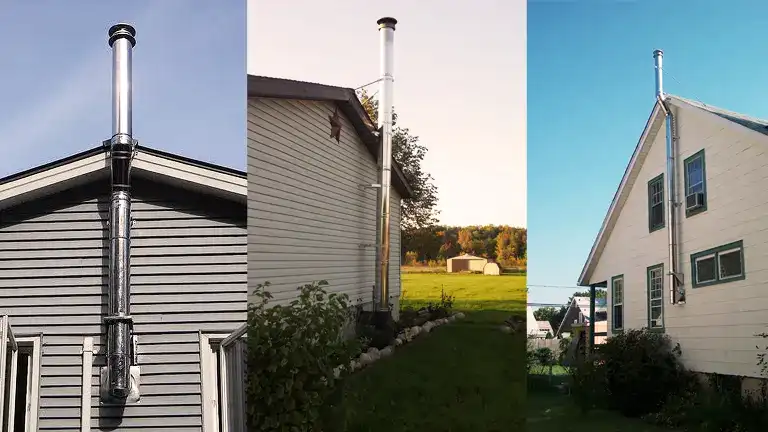
While some homeowners are drawn to the aesthetic or perceived convenience of outside chimneys, they come with their set of challenges. One of the most common issues is difficulty in lighting, especially in colder conditions. The external environment can cool the chimney, causing back-drafting problems, where smoke doesn’t rise and exit as it should but instead flows back into the home. This also means that they require more frequent cleaning, as a colder chimney can lead to increased creosote buildup. Specifically, for homes with basements, an outside chimney can lead to draft problems due to its exposed positioning. Moreover, on upper floors, these cold chimneys present additional concerns, such as flue gas condensation. This not only makes the chimney harder to light but can also accelerate the accumulation of deposits, necessitating more frequent maintenance.
4. Chimney Height and Location
While the primary function of a chimney is to efficiently guide smoke out of your home, the intricacies of its height and positioning often play a pivotal role in its overall performance and safety.
Height Parameters
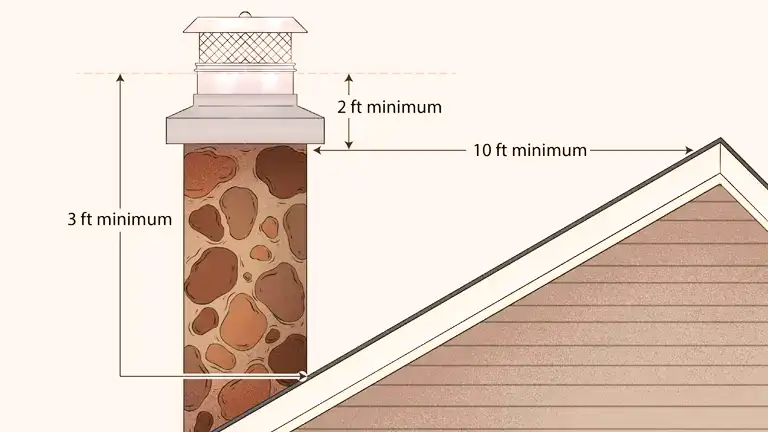
A rule of thumb to follow when considering chimney height is that it should terminate at least 2 feet above any obstruction or structure within a 10-foot radius. This is to ensure that smoke doesn’t get trapped or find its way back into the house. This rule becomes paramount, especially in homes with varied roof pitches or when the intended chimney location is on a lower part of the roof.
Challenges with Steep Roof Pitches
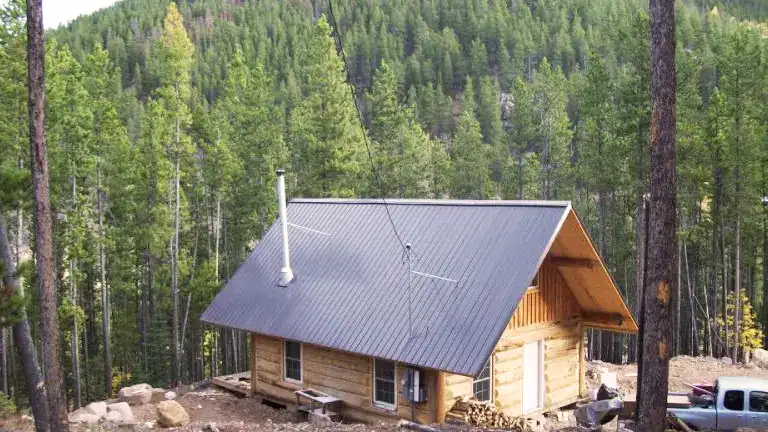
Placing a chimney at the base of a steep roof pitch can present several complications. Not only can it obstruct the efficient exit of smoke, but it can also lead to violations of the aforementioned “2 feet within 10 feet” rule. Consequently, homeowners might find themselves with an excessively tall chimney, which not only becomes a visual oddity but can be challenging to manage, clean, and maintain.
Bracing Tall Chimneys
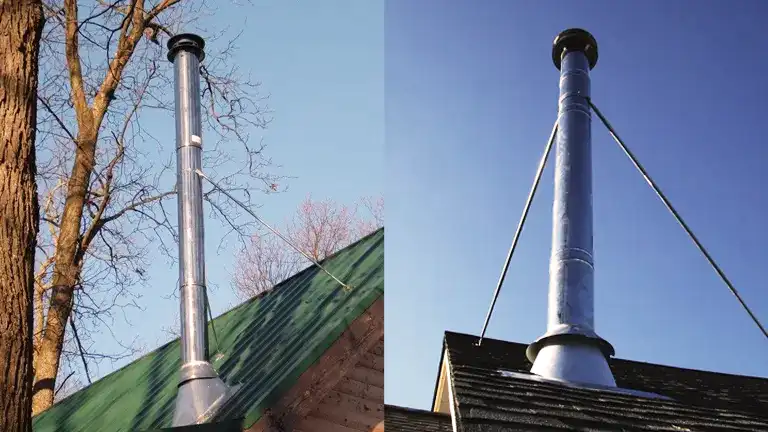
Chimneys that exceed a height of five feet from the roof line present another layer of challenges—safety. Such towering structures are exposed to wind loads and other environmental factors that can compromise their stability. To counteract these risks, it’s essential that these chimneys be braced. Bracing provides the necessary support and anchoring, ensuring that the chimney remains stable and upright, even under duress. Proper bracing not only extends the life of the chimney but also protects your home and its residents from potential accidents.
5. Special Considerations for Snowy Areas
In areas that witness heavy snowfall, installing a wood stove and its chimney requires some added precautions. The challenges presented by snow accumulation can affect both the functionality and safety of your chimney.
Snow Deflectors
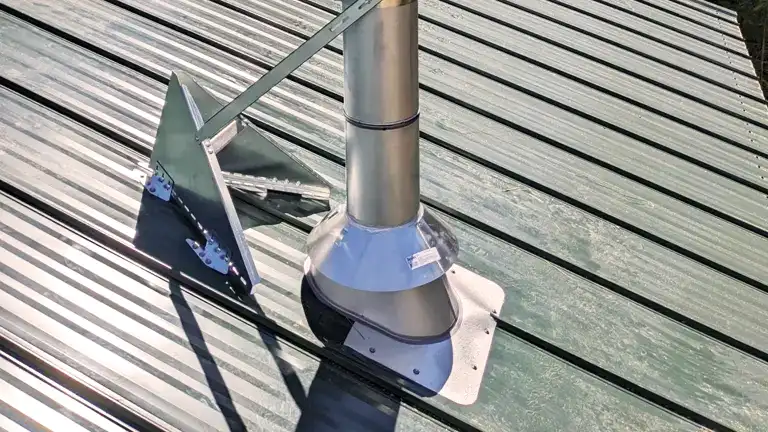
The primary purpose of a snow deflector is to prevent snow from piling up around the base of your chimney. This is crucial because excessive snow can obstruct the chimney’s opening, leading to inefficient venting or back-drafting issues. A blocked chimney can also pose a risk of carbon monoxide buildup within the home, making it crucial to ensure the chimney remains clear.
Risks with Metal Roofs

Metal roofs, with their sleek surface, have a tendency to shed snow more quickly and in larger amounts than other roofing materials. In such cases, if a snow deflector is not adequately supported or designed, there’s a potential risk of it failing under the sudden weight of sliding snow. This can result in damage to the chimney or even cause it to detach from the roof.
Roof Braces and Snow Accumulation

Another concern to be aware of is the accumulation of snow on the roof braces that support the chimney. If snow accumulates and compacts around these braces, it can exert a considerable amount of weight and pressure. Over time, this weight can cause the braces to bend or buckle, jeopardizing the stability of the chimney. In the worst scenarios, this pressure can even pull the chimney over, leading to significant property damage and potential safety hazards.
For homeowners in snowy regions, it’s not just about enjoying the warmth of a wood stove; it’s also about understanding and addressing these unique challenges. Regular maintenance, inspections, and investing in durable, high-quality components can mitigate these risks, ensuring a safe and cozy winter.
6. Choosing the Right Stove and Chimney Brand
Selecting the perfect location for your wood stove is just the beginning. Ensuring you have the right equipment is equally, if not more, vital. Your choice of stove and chimney brand can significantly influence the performance, longevity, and safety of your wood heating system.
Educate Before You Install

If you’re inclined towards a DIY installation, preparation is key. Dive deep into the installation manuals provided by the stove and chimney manufacturers. These guides are designed not just to aid in setting up but also to ensure the optimal operation of the system. They detail the nuances and specific requirements of each model. It’s worth noting that inspectors, when reviewing your setup, will strictly assess your adherence to these manuals. Following them to the letter not only guarantees a system that’s up to code but also one that performs efficiently.s
The Value of Professional Installation

While taking the DIY route can be tempting, especially for those who are hands-on or looking to save on costs, wood stoves, and chimneys are intricate systems that demand precision and expertise. Engaging a wood heating professional for the installation brings with it a wealth of experience. These experts are not only familiar with various brands and their quirks but also with the latest safety standards and best practices. By choosing to hire a professional, you’re investing in the peace of mind that your system is not just correctly installed but is also primed for long-term safe operation.
Remember, a wood stove is more than just a heating device; it’s a long-term commitment to your home’s comfort and safety. Thus, making informed, strategic choices at every step, from brand selection to installation, is paramount.
Positioning your wood stove optimally is the cornerstone of harnessing its full potential, both as a source of warmth and as a centerpiece of your home’s design. By addressing both its functional requirements and aesthetic considerations, you craft an environment that promises warmth, safety, and elegance. With diligent planning, informed choices, and a nod to best practices, your wood stove becomes more than just a heating device—it transforms into a cherished element of your home, ensuring countless snug winters ahead. Whether it’s the deep chill of December or the gentle cold of early spring, with your wood stove rightly placed, every moment indoors becomes a cozy embrace.
FAQs
- Why is the center of a home often recommended for wood stove placement?
Positioning a wood stove in the center allows for more even heat distribution throughout the home, maximizing its efficiency. - Can I place a wood stove near a window?
While it’s possible, caution is advised. Windows can be a source of drafts, affecting the stove’s operation, and the heat might damage or crack the window over time. - How does ceiling height impact wood stove placement?
Rooms with high ceilings might require a larger stove or a fan to help distribute heat evenly, as heat naturally rises. - Is it true that placing a wood stove on a shared wall can benefit adjoining rooms?
Yes, the shared wall can radiate warmth into the adjoining room, but insulation and safety precautions are crucial to prevent overheating or fire risks. - How do open floor plans affect wood stove efficiency?
Open floor plans can enhance the distribution of heat throughout the space but might require a more powerful stove to heat larger areas effectively. - Does the type of flooring impact where I should place my wood stove?
While wood stoves require non-combustible floor pads regardless of the floor type, some materials, like hardwood or carpet, might be more sensitive to heat and may require extra protection. - How can I aesthetically integrate a wood stove into my modern interior design?
Consider stoves with contemporary designs, use stylish hearth materials, or add decorative stove surrounds that match your decor. - Is it advisable to place a wood stove near the staircase in multi-level homes?
A staircase can help in distributing the heat to upper levels, but ensure there’s enough space to prevent any fire hazards or obstructing the passageway. - Can the color of my wood stove affect its heating efficiency?
While color can influence heat radiation slightly, the effect is minimal compared to other factors like stove material and design. However, darker colors might radiate heat more effectively than lighter ones. - How does outdoor landscaping, like tall trees or structures, affect my chimney’s location?
External obstructions can impact draft and smoke dispersion, making it essential to ensure the chimney is positioned to stand clear of these elements.
Hey there, dear reader! We’ve delved deep into the world of wood stove placements for 2024, and I hope you’ve found our guide enlightening. But, you know what? The conversation doesn’t end here. Your home, your experiences, and your insights could offer a whole new perspective!
So, how about it? Do you have a wood stove story to share, a unique placement idea, or perhaps a question or two? Drop them in the comments below. We’d genuinely love to hear from you. Let’s keep this conversation warm, welcoming, and, most importantly, cozy!

David Murray
Forestry AuthorI'm David Murry, a forestry equipment specialist with a focus on chainsaw operation. With over 13 years of experience, I've honed my skills in operating and maintaining a wide range of machinery, from chainsaws to log splitters. My passion for the outdoors and commitment to sustainable forestry drive my work, which emphasizes safety, efficiency, and staying updated with industry advancements. Additionally, I'm dedicated to sharing my expertise and promoting environmental awareness within the forestry community.










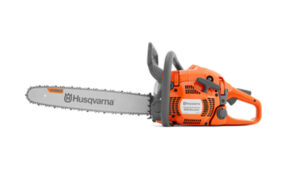


I recently moved to a rural area. Been cutting down trees and have a wood stove. I have been reading so many of your articles. Thanks...
Eric
October 15, 2023 6:31 pm